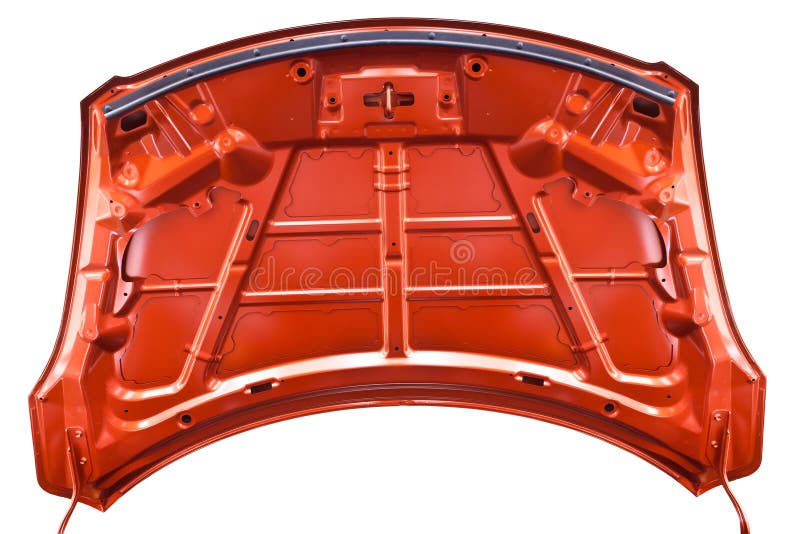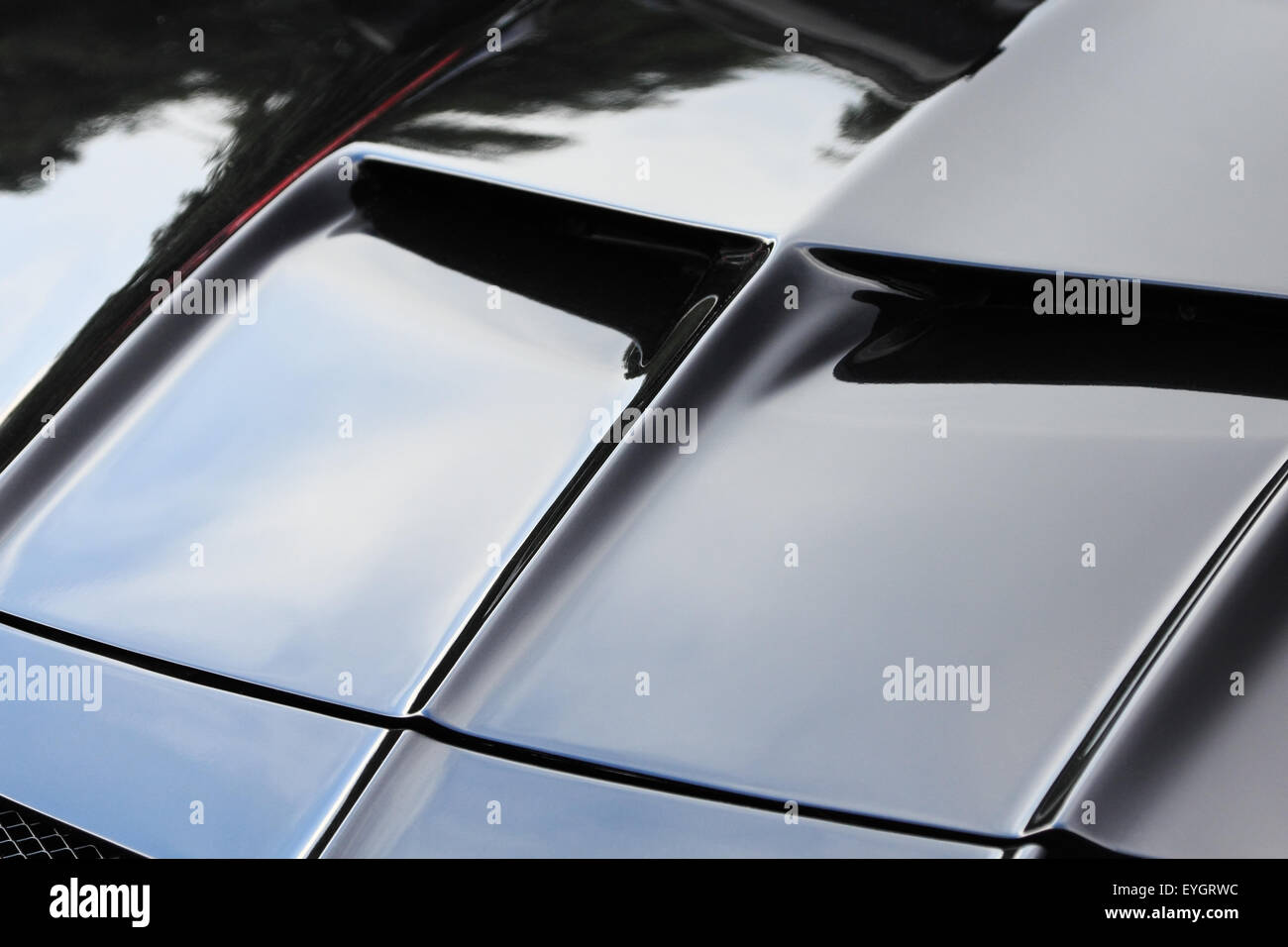What single component acts as a guardian for your engine, a shield against the elements, and a key to essential maintenance? The answer is the car hood, an often-overlooked yet critical part of any vehicle, responsible for both safety and functionality.
The automotive world has its own lexicon, and understanding it is key to navigating the complexities of car ownership and maintenance. The hood, or bonnet as it is referred to in Commonwealth English, is more than just a metal panel; its a carefully engineered piece of equipment that serves multiple purposes. Whether you're a seasoned mechanic or a novice car owner, understanding the nuances of the car hood is essential.
Let's delve into the anatomy and function of this vital component. The hood, regardless of whether it's an American English "hood" or a Commonwealth English "bonnet", is a hinged cover that sits atop the engine compartment of motor vehicles. Its primary function is to protect the engine and its connected parts from the elements. Rain, snow, debris, and even sunlight can wreak havoc on the sensitive components under the hood. By providing a barrier, the hood extends the life and reliability of these crucial parts. But its role extends beyond mere protection; the hood also plays a role in aerodynamics and accessibility.
- Laura Ciancola Exwife Of Tim Howard Facts Insights
- Marshels Wright Donaldson Funeral Services Obituaries Beaufort Sc
| Feature | Details |
|---|---|
| Definition | The hinged cover over the engine of motor vehicles. In American English, it's called a "hood," and in Commonwealth English, it's called a "bonnet." |
| Primary Function | Protects the engine and its connected parts from the elements (rain, snow, debris, sunlight). |
| Additional Functions | Contributes to aerodynamics in some vehicles, providing easy access to the engine for maintenance and repairs. |
| Materials | Often made of steel or aluminum. Modern hoods may incorporate composite materials for weight reduction and styling. |
| Components | Hinges, latch, hood lift supports (struts or prop rod), and potentially hood locks and ornaments. |
| Aerodynamic Role (Sports Cars) | Hood design can reduce air resistance (drag), improving performance. |
Reference: National Highway Traffic Safety Administration (NHTSA)
The mechanics of the hood are straightforward, yet essential. A standard hood on a modern car with an engine in the bonnet has hinges on the edge facing the windshield, allowing it to swing open. A latch, usually located near the center of the bumper edge, holds the hood securely closed. When the hood is opened, either via a release lever inside the car or by manually disengaging a safety catch, the latch disengages, allowing the hood to be lifted. In many vehicles, gas-charged struts or a prop rod are used to hold the hood open, providing easy access to the engine compartment for maintenance and repairs.
Beyond its protective function, the car hood also contributes to the overall safety of the vehicle. It acts as a barrier, preventing debris from entering the engine compartment and potentially causing damage. In the event of a collision, the hood is designed to crumple and absorb some of the impact energy, helping to protect the engine and, in some cases, the occupants of the vehicle. Considering the important role it plays, it is easy to understand why, in simple words, the hood of the car is responsible for the safety of the car.
- Mclennan County Jail Inmate Lookup Mugshots Find Info Now
- Lee Je Hoon News Dramas More Your Ultimate Guide
For sports cars, the design of the hood takes on an additional dimension. Here, the hood becomes an aerodynamic mechanism. By carefully crafting the shape of the hood, designers can reduce air resistance, or drag, allowing the car to slice through the air with greater efficiency. This is achieved through subtle curves, vents, and spoilers, all of which work together to improve the car's performance. The goal is to ensure that the car not only looks fast but is fast, all while maintaining fuel efficiency.
The materials used in the construction of car hoods vary. Traditionally, steel was the material of choice, offering durability and cost-effectiveness. However, modern vehicles often utilize aluminum or composite materials. Aluminum hoods are lighter than steel, which contributes to improved fuel efficiency and handling. Composite materials, such as carbon fiber, offer the ultimate in weight reduction and are often found on high-performance vehicles. The choice of material depends on factors such as cost, performance goals, and styling preferences.
Accessibility is another critical aspect of the car hood. The hood provides relatively easy access to the engine and its connected parts, making it simple to perform routine maintenance tasks such as checking fluids, changing the oil, and inspecting belts and hoses. This accessibility is crucial for both professional mechanics and DIY enthusiasts. Without easy access to the engine compartment, even the simplest maintenance tasks would become a major undertaking.
When considering the purchase of a new hood, several factors come into play. Whether you're replacing a damaged hood, or simply want to customize your vehicle, it is important to understand the different types of hoods and the available customization options. The first step is to determine the make and model of your car, as hood compatibility is paramount. Then, consider the material you want (steel, aluminum, or composite) and choose the style that matches your vehicle's design and your personal preferences. Options can include different vents, scoops, and finishes, all of which can transform the look and performance of your car. Buying car parts online is a convenient option, providing access to a wide selection of different materials, designs, and finishes for your new hood.
Security is also a consideration. While not present in all vehicles, hood locks can provide additional protection, preventing unauthorized access to the engine bay. These locks add an extra layer of security, deterring theft and tampering. They are a particularly good option for vehicles parked in areas where security is a concern.
Some vehicles feature hood ornaments. These decorative embellishments, often bearing the brand logo, add a touch of personalization to the car's exterior. While primarily aesthetic, hood ornaments are a traditional feature, symbolizing the history and design of the car. They can also serve as a focal point, adding to the car's overall aesthetic.
The weight a car hood can hold varies depending on the vehicle type. For the average passenger car, the hood can typically hold up to 50lbs (22kg) before potentially sustaining damage. Truck hoods, on the other hand, are often designed to withstand significantly greater weight, sometimes up to 500lbs or 226kg. It's always best to consult your truck owner's manual to find the manufacturer's specifications.
Opening and closing the hood seems a simple process, but it involves carefully engineered mechanisms. On opening the hood, the gas pressure forces against the piston, pushing the rod out and the hood up. This is the function of the gas struts. Some vehicles rely on a prop rod to hold the hood in place, which requires manual engagement.
Over time, these components can fail. The hood lift supports, much like any strut or shock, need replacing. As they wear and age, you will notice needing to use more effort to lift the hood, or having to hold it there, or need to use a prop rod to keep the hood up. The metal prop rod is usually located on the inside of the engine bay, near the front of the car. Some modern models don't require a prop rod, with the hood staying in place by itself.
A stuck car hood can be a frustrating experience. At times, the hood wont pop open even when youve released the inside latch. Regular maintenance is crucial in preventing this inconvenience. By taking a few simple steps, you can ensure that your car hood operates smoothly and avoids any unwelcome surprises. First and foremost, make it a habit to regularly inspect the hinges and latches of your car hood. Lubricate the hinges with a suitable lubricant to prevent rust and ensure smooth operation. Check the latch mechanism for proper function, and replace any worn or damaged parts immediately. By taking these steps you can avoid the headache of a stuck hood.
In conclusion, the car hood is an essential component of any vehicle. It provides protection, contributes to safety and aerodynamics, and offers easy access for maintenance and repairs. Understanding the different types of hoods, their mechanics, and the materials they are made from, will help you make informed decisions and keep your vehicle operating at its best. Whether you're purchasing a replacement hood, customizing your vehicle, or simply learning about automotive components, a knowledge of the car hood is valuable.
- Human Latch Horror Gary Mars Terrifying Transformation
- Coomeet Random Video Chat Meet Girls Worldwide


